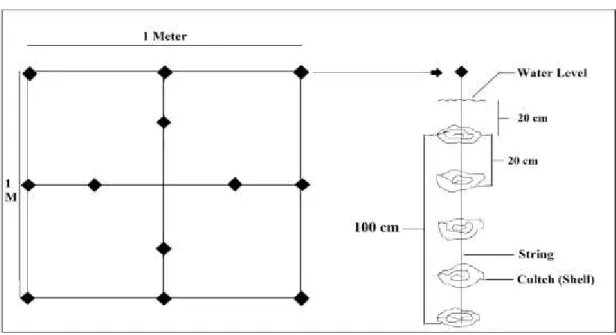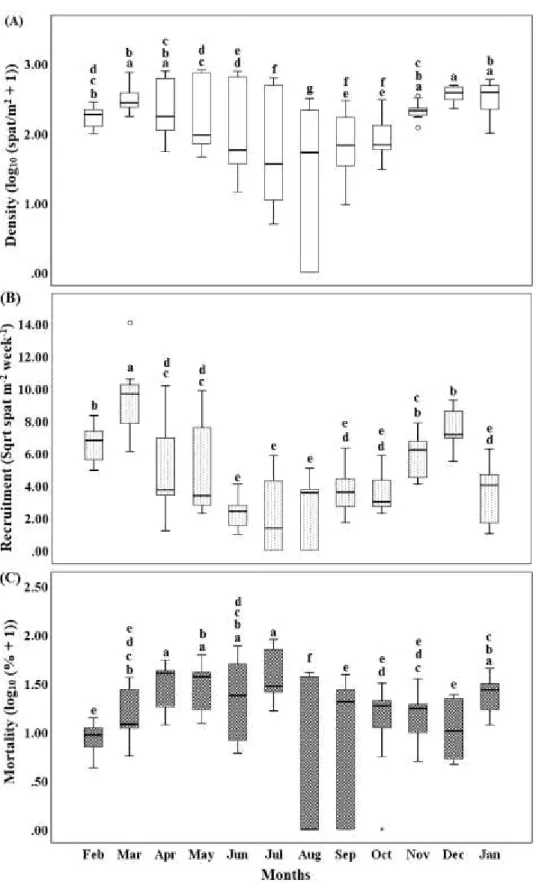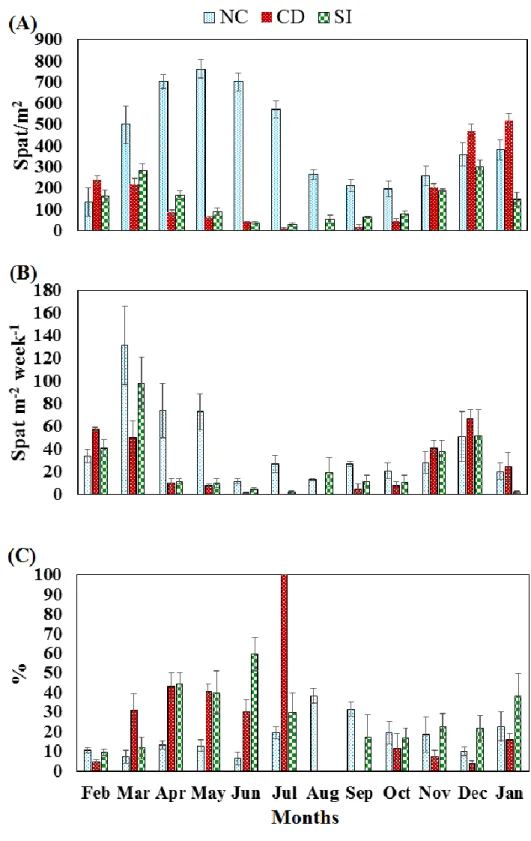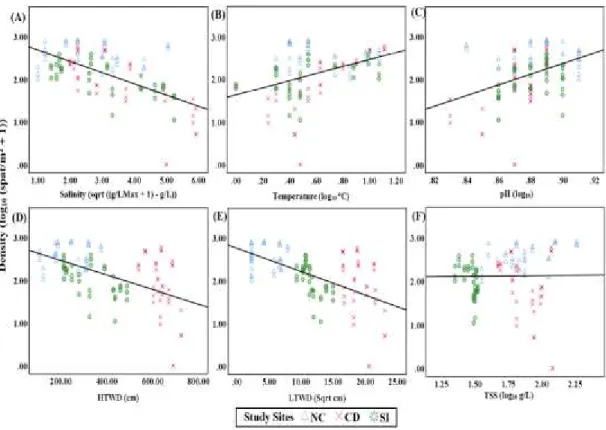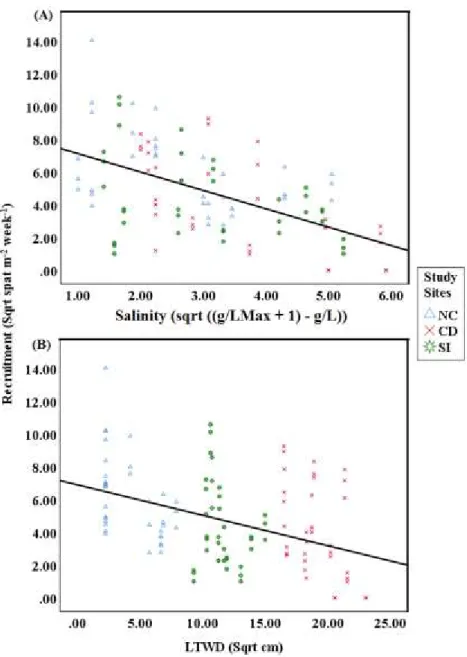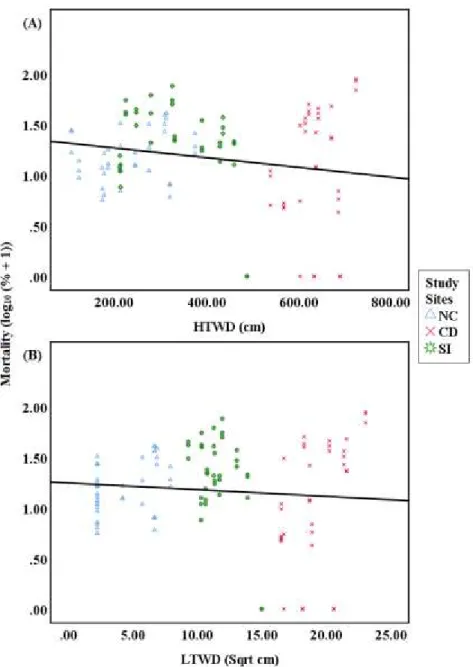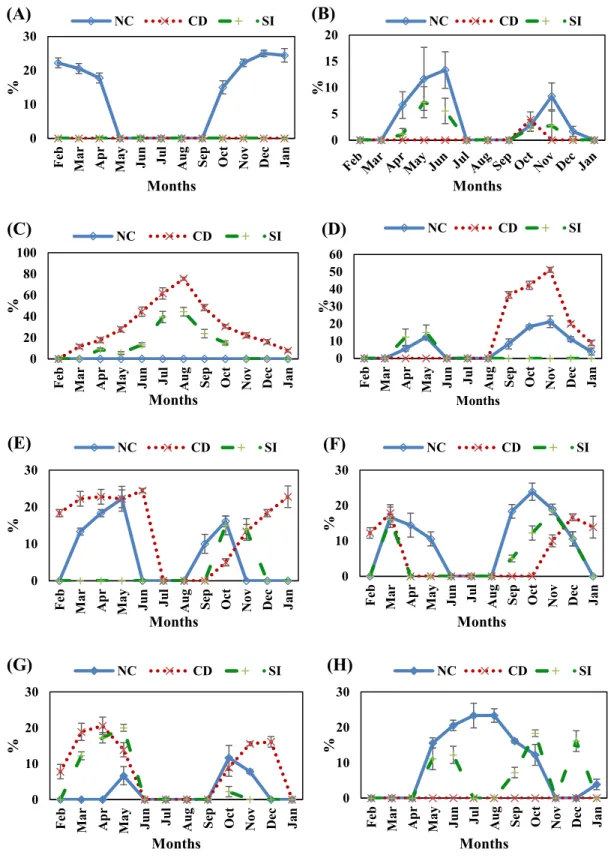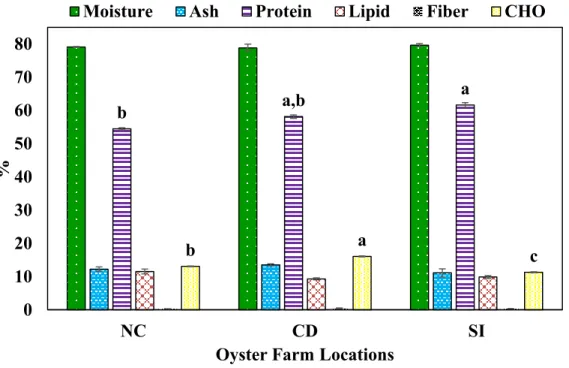First, worsening overfishing, disease outbreaks, and changes in coastal hydrology have resulted in a decline in oyster habitats (Rothschild et al. 1994; Kirby 2004). Most successful oyster restoration projects have used oyster shell as a substrate for the establishment of oyster spuds from existing natural oyster reefs (Bartol and Mann 1997; Blomberg et al. 2018). Nevertheless, the settlement pattern is negatively affected by accretion (Sutherland and Karlson 1977; Nalesso et al. 2008).
The concentration of waste products, food and oxygen supply can be negatively affected in the farming environment due to the water flow reduction caused by biofouling (Mohammad 1976; Lodeiros et al. 2002). Regular dietary EPA and DHA intake has also been shown to significantly prevent inflammatory, cardiovascular and neural disorders (Casula et al. 2013).
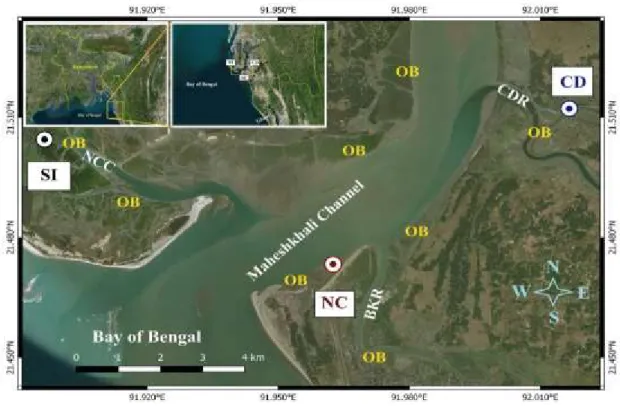
Data collection for economic evaluation
Analysis of fatty acid methyl esters (FAMEs) was performed by gas chromatography mass spectrophotometry using a GCMS-QP2020 (Shimadzu, Japan), equipped with flame ionization detector. FAMEs were separated with a capillary column (Length 30 m, inner diameter 0.25 mm, film thickness 0.15 μm, and phase ratio 250).
Economic viability
Net Profit = Annual Revenue – (Depreciation Expense + Recurring Expenses) Where Depreciation Expense is 33.33% of Fixed Expenses. All data except the water depth data at high tide were non-normally distributed. Box-and-whisker plots were used to show temporal and spatial variation in sputum density, recruitment, and mortality.
The relationship between spat density, recruitment and mortality rate was further examined using a linear multiple regression analysis with the transformed data. When the assumptions were met, Tukey's honestly significant difference test was used to differentiate the proximate and fatty acids among the three oyster farms.
Results
- Spatial variability of spat density, recruitment, and mortality
- Temporal variability of spat density, recruitment, and mortality
- Variability of spat density, recruitment, and mortality with the interaction effect (study sites:months)
- Relationship of spat density, recruitment, and mortality with environmental variables
- Fatty Acids
- Economic viability
Spatial density (log10 (x+1) transformed), recruitment (sqrt transformed) and mortality (log10 (x+1) transformed) varied significantly (p < 0.05) in accordance with the interaction of study sites and months ( place of study: month). Considering environmental variables as covariates, significant relationships of study sites and months with saliva density, recruitment and mortality were found (p < 0.05). Further research was conducted through linear multiple regression analysis, which could significantly (p < 0.05) represent 70.5% of saliva density, 40.3% of saliva recruitment and only 7.6% of saliva mortality.
On both sides of all three replicates at all three study sites, 60 mussels were observed each time. Furthermore, the relationships between water temperature (log10 transformed), pH (log10 transformed), water depth at high tide and total suspended solids (log10 transformed) with sputum recruitment (sqrt transformed) were not significant (p > 0.05). However, the relationships between salinity (sqrt ((xMax+1)-x) transformed), temperature (log10 transformed), pH (log10 transformed) and total suspended solids (log10 transformed) with sputum mortality (log10 (x+1 ) transformed) were not significant (p > 0.05).
Sponges affected the highest at NC (13.33 % substrate shells) in June 2019, while no evidence of sponges was found during February to March, July to September 2019 and January 2020 at any of the three sites (Figure 9B). Mussels were highest affected at CD in November (51.11 % substrate shells), while no evidence of mussels was found at any of the sites during February to March and June to August 2019 (Figure 9D). Fire affected CD the highest in June (24.44 % substrate shells), while no evidence of fire was found at any of the three sites during July to August (Figure 9E).
Other oysters affected substrate shells highest at NC in October, while no evidence of other oysters was found at any of the three sites during June to August 2019 (Figure 9F). Polychaetes affected substrate shells highest at CD in April), while no evidence of polychaetes was found at any of the three sites during June to September 2019 and in January 2020 (Figure 9G). Oyster borers touched substrate shells highest at NC in July to August), while no evidence of oyster borers was found at any of the three sites during February to April and November 2019; additionally, no evidence of oyster burrows was also observed at CD throughout the study period (Figure 9H).
In this study, moisture content was determined on a wet weight basis, while protein, lipid, carbohydrate, ash, and fiber content was determined on a dry weight basis from the three pilot oyster farms. The payback period of the three oyster farms, driven by net profitability, showed that the fastest recovery of investment can be obtained from the CD farm, while the slowest recovery can be obtained from the SI farm (Table 2).
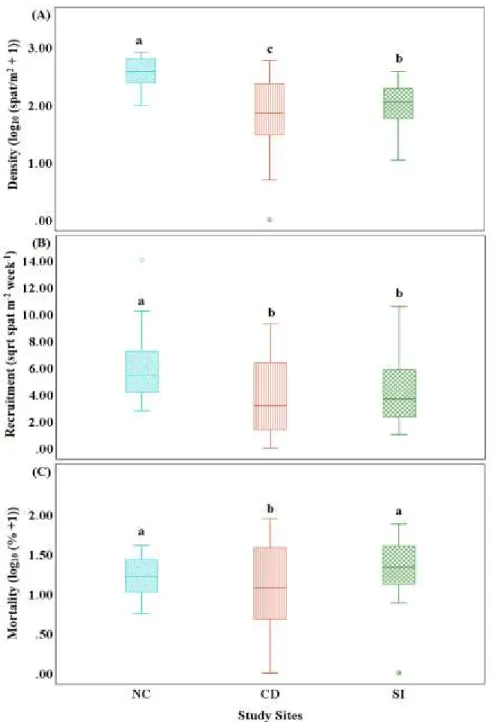
Discussion
Spat Settlement Pattern
In this study, we also found that environmental variables varied across study sites over time (Figure 13). Further analysis showed that saliva density was positively correlated with salinity (the negative correlation with negatively reflected salinity represents the positive correlation with the original salinity data), temperature, pH, and TSS (Figure 6A–C, F). Pollack et al. 2011); Overall, evidence shows that episodic freshwater pulses of short duration increase oyster populations (Marshall et al. 2019).
However, relatively higher chunk densities were observed in an intertidal zone with increased salinity (Metz et al. 2015). Nevertheless, it was found that the eastern oyster can survive for a relatively longer period (>2 months) at low salinity (<5 g/l) but at low temperature (<11 °C); However, at elevated temperatures (11 – 32°C), the oyster cannot survive at low salinity (Powell et al). Although spit density was positively related to TSS, the correlation between them was poor (Figure 6F).
In contrast, various studies from North Carolina and the Chesapeake Bay show that oyster abundance decreases and mortality increases with increasing sedimentation (Lenihan 1999; Jordan-Cooley et al. 2011). Recruitment was positively related to salinity (a negative relationship with negative reflected salinity represents a positive relationship with the original salinity data) and negatively related to LTWD (Fig. 7). Therefore, spat retrieval and consequently density was observed to be greater at NC due to higher salinity and shallower water depth at high tide (Fig. 3 A-B, 13B, D). 2019) found that low salinity due to precipitation negatively reflected spat accumulation in an artificially constructed oyster reef in the intertidal zone of Matagorda Bay, Texas.
Previous studies in Florida also show that increased precipitation during the rainy season reduces salinity (Metz et al. 2015) and subsequently a strong decrease in oyster pudding survival was also observed due to physiological limitations in low salinity areas (< 10 g/L). (Wilson et al. Although fouling organisms were cleaned every 15 days, they had sufficient time to negatively affect spit recruitment and positively affect spit mortality (Figure 5C, 9C, H). 2002) found that fouling organisms could directly cause oyster mortality. Tanyaros (2011) discovered that oyster shells send a chemical signal from shell string to oyster pudding to settle.
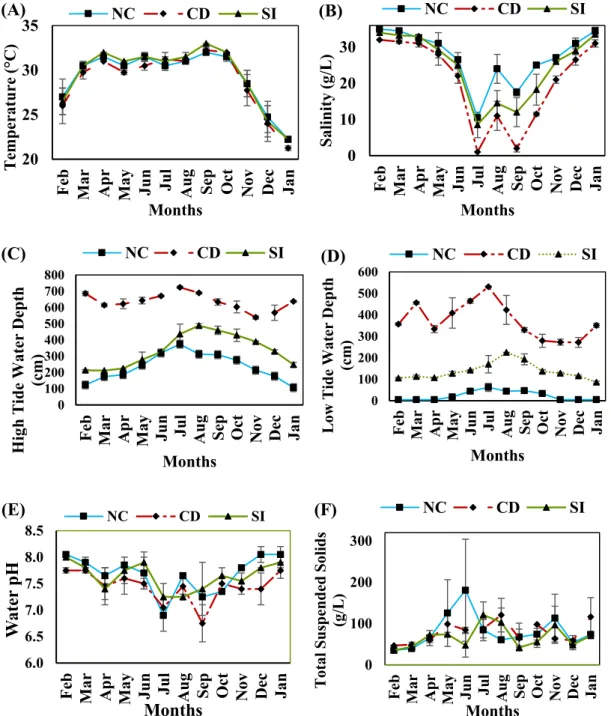
Nutritional composition of oyster
Finally, this study found that none of the three sites would be potential for spat collection or string oyster culture during the monsoon period; NC has greater allocation potential for sputum collection than others. Thus, NC has greater potential from late October to mid-May to collect spat for both commercial oyster farming and restoration to increase coastal resilience. For similar reasons, n-3/n-6 PUFA and DHA/EPA ratios differ from Martin and Cruz (2004) and Pratt et al.
However, saturated fatty acids, monounsaturated fatty acids, polyunsaturated fatty acids, and other fatty acid ratios are similar in their results. Fatty acid composition varies with various intrinsic factors (age, sex, size and lifestyle) as well as extrinsic factors (diet, temperature and salinity). Among these factors, temperature has a notable influence on fatty acid composition, such as decreased temperature level stimulates unsaturation of fatty acids to thus ensure body flexibility and membrane fluidity by maintaining the freezing point below the temperature of the surrounding water (Eastman 1990; Martino et al. 2002).
However, elevated temperature also triggers the rise of phospholipids and thus prevents excessive membrane fluidity (Martino et al. 2002). On the other hand, with the increased concentration of phytoplankton in the water, Bachok et al. 2003) observed higher levels of energy-important fatty acids. In addition, phytoplankton availability varies seasonally and spatially in the coastal areas preferred by oysters (Mehedi et al. 2017).
In tissues of marine primary producers, Dalsgaard et al. 2003) revealed unique patterns of fatty acids that can be invariably passed on to species with a higher trophic level. The availability of 20:1 and C18:2n-6 in marine bivalves indicates the presence of herbivorous zooplankton, algae and fungi as a food source in their habitat (Erwin 1973; Kayama et al. Being a bivalve oyster is an animal that feeds on filter.accumulate elements from water, inorganic particles and food that can also result in bioaccumulation of toxic substances (Liao and Ling 2003; Amiard et al. 2008).
Economic viability
Conclusions
Recommendations and Future Perspectives
Economic feasibility of small-scale commercial culture of the southern bay scallop (Argopecten irradians concentricus). Rome, Italy: Publications Management Service, Information Division: Food and Agriculture Organization of the United Nations. Establishment of the American pearl crayfish Crassostrea virginica in the James River, Virginia, USA: Temporal and spatial distribution.
Bangladesh National Report on Sustainable Management of the Bay of Bengal Large Marine Ecosystem (BOBLME). Seasonal distribution of phytoplankton communities in a subtropical estuary of the southeastern coast of Bangladesh. Relationship between biofouling and growth of pearl oyster Pinctada fucata (Gould) in Kuwait, Arabian Gulf.
The importance of N-3 fatty acids for the development and function of the retina and the brain. Proximate composition, fatty acid and lipid class composition of the muscle of deep-sea teleosts and elasmobranchs. The effect of substrate conditioning on larval settlement and spawning growth of the shelled oyster, Crassostrea belcheri (Sowerby), in a hatchery.
Appendix A: Costs of the three commercial oyster farms at Cox's Bazar, developed by the Department of Fisheries, Bangladesh. Appendix B: Income of the three commercial oyster farms at Cox's Bazar, developed by the Department of Fisheries, Bangladesh. Appendix E: Analysis of the linear multiple regression between oyster spar density (log10 (x+1) transformed) and environmental variables.
Appendix F: Multiple linear regression analysis between oyster spat recruitment (square root transformed) and environmental variables. Appendix G: Multiple linear regression analysis between oyster spat mortality (log10 (x+1) transformed) and environmental variables.
Brief Biography of the Author
